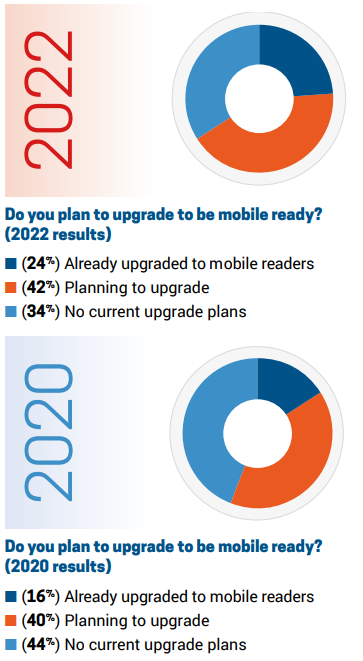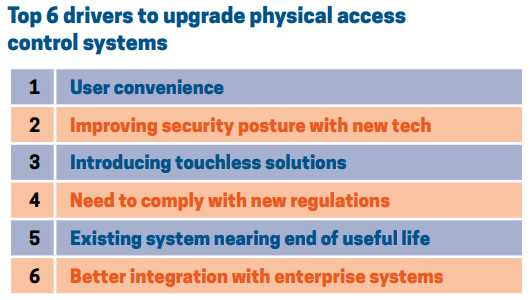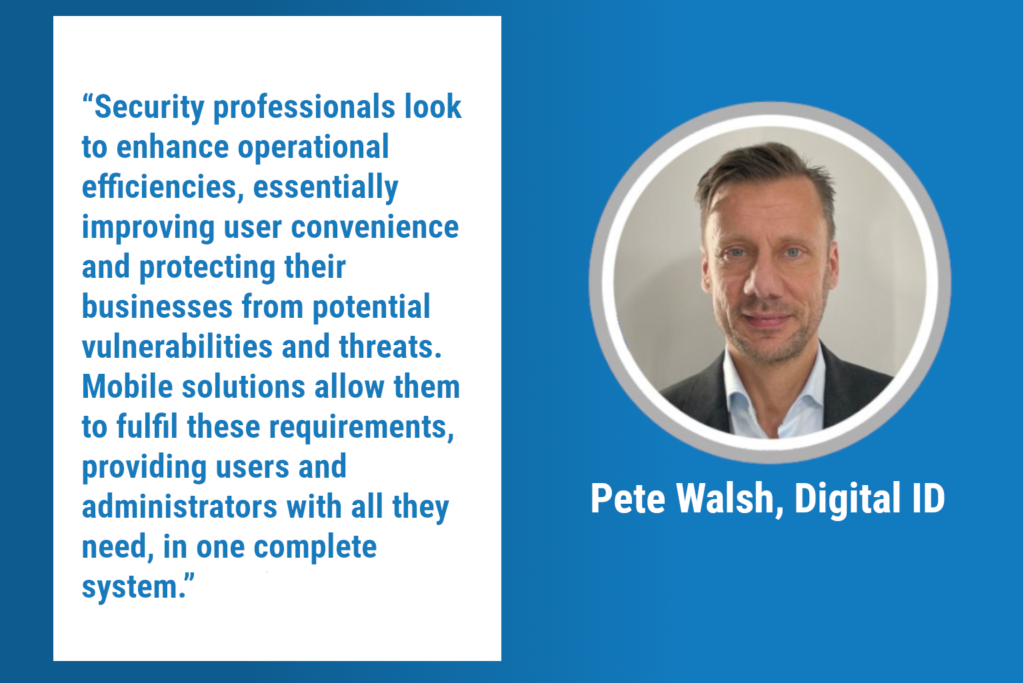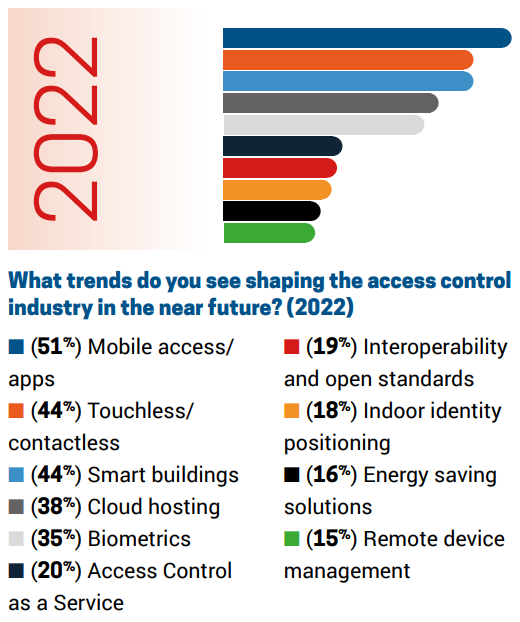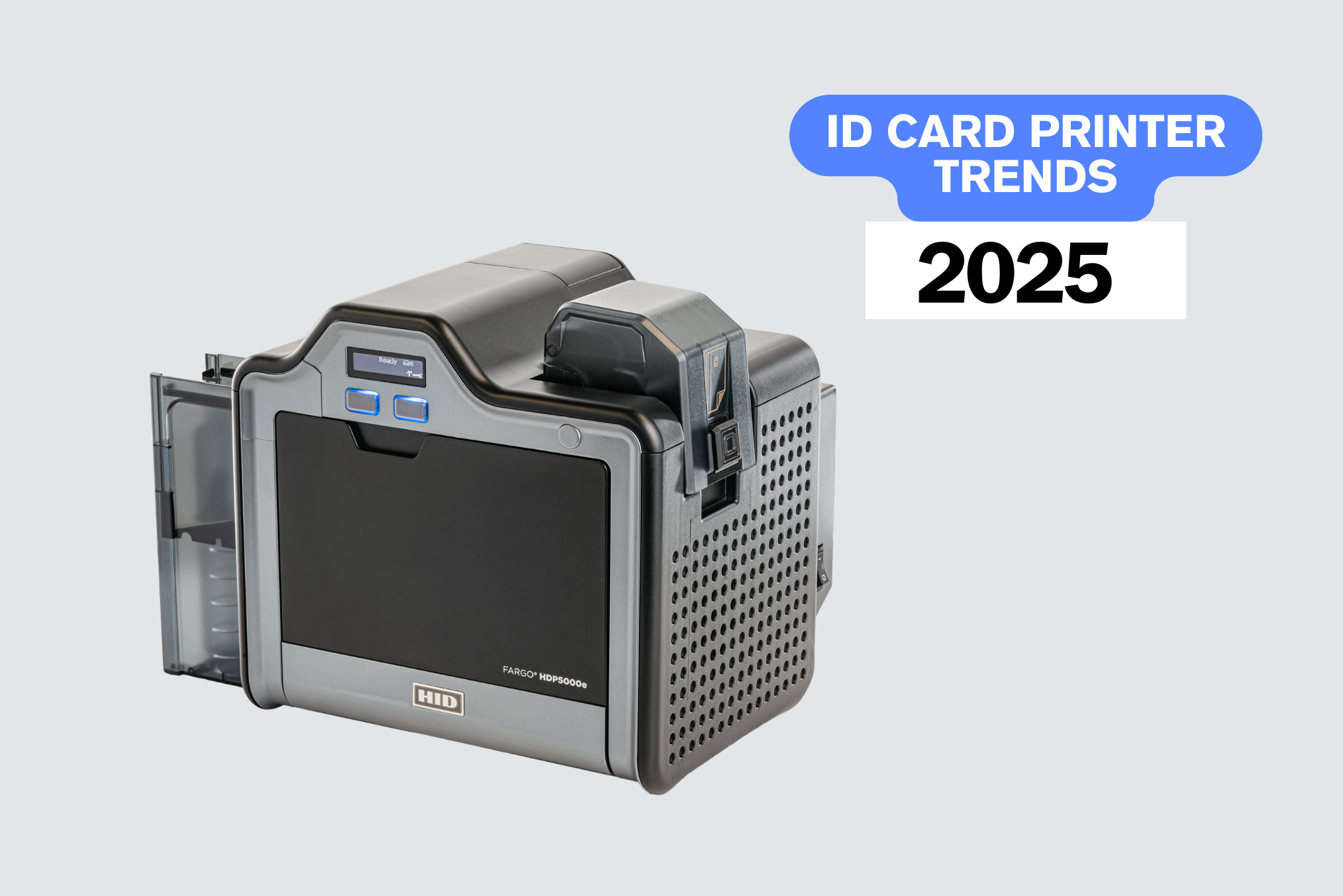HID Global, leading trusted identities provider, recently released The 2022 State of Physical Access Control Report.
Produced in partnership with IFSEC Global, the report surveyed just over 1,000 respondents across North America (56%), EMEA (29%) and Asia Pacific (15%) to detail trends in the procurement, installation, specification, and operation of physical access control solutions.
The aim of the report is to provide insightful perspectives of the market’s current state and highlight the direction it’s taking.
We asked our Head of Mobile & Access Control, Peter Walsh, to download a copy and give us his take on the report.
Enjoy.
The move to mobile
The clear winner in the report was the increased demand for mobile solutions, particularly businesses that have switched to a mobile access solution or plan to in the near future.
As a long-term advocate of this solution, it’s great to see the growing demand for mobile access control and touchless capabilities, particularly in comparison to the 2020 report.
In 2020, IFSEC’s report found that 28% of respondents were either in the process of upgrading to mobile technology or already had it. In comparison, the figure for this year’s report stands at 38%, demonstrating a significant increase.
The results have been simplified in the graph below to outline a trend in the growth of mobile in the physical access control industry.
From the conversations and meetings I’m having daily, I would say that the 2% increase of organisations planning to upgrade as stated in the report seems to be more along the lines of 10-15% here in the UK.
The awareness of outdated and unsecure technologies is being driven home from all angles and I personally feel that the message is finally sinking in.
The risk of outdated technology
The report further states that modern credentials like HID Seos® (used in HID’s mobile access solution) are more secure than outdated credentials such as low-frequency prox, which was still being used by 32% of respondents.
Seos is encrypted, making it more secure, whereas low-frequency prox remains unencrypted and can easily be duplicated.
You’d be surprised at the number of businesses still using outdated technologies, even while aware of the vulnerabilities they bring.
However, security wasn’t the number 1 motivation for companies considering mobile solutions.
The growing need for convenience…
The main reason why companies wanted to switch to mobile solutions was to improve user convenience. This was the top day-to-day challenge security professionals faced with systems, and 43% of respondents would like to make the administration of physical access control easier.
From recent on-site visits, I’m seeing large corporations concentrate more efforts on enriching the user experience, and mobile access solutions provide a sure-fire way of doing this. These solutions remove the hassle of physical card issuance protocols and streamline the entry process for all users.
…and new tech to improve security
The second reason why respondents were looking to switch was indeed security, and specifically taking advantage of new tech to improve security posture.
We’ve seen greater requirements for convenience and secure technology since the pandemic began, especially due to remote working procedures. And this demand is anticipated to grow even more in the coming years.
The report showed a 10% decrease in the number of respondents that were satisfied with their current systems, in comparison to 2020.
In 2020, 51% of respondents were satisfied with their existing systems, but in 2022, this figure lies at 41%. We anticipate this figure to decrease even more in the coming years, as workplace requirements evolve and more secure, convenient options become available.
Ultimately, mobile access solutions deliver an effective way of improving user convenience and strengthening company security – two of the top priorities for respondents.
In terms of future trends, 51% of respondents said they see mobile access/apps as a trend that will shape the access control industry in the near future.
Strengthening sustainability
As you can see above, a further 16% of respondents believe that energy saving solutions will be a top trend set to shape the access control industry in the near future. Mobile access control solutions clearly support sustainability efforts, reducing single-use plastic and the need to print physical cards.
What’s more, 19% of respondents identified ‘supporting sustainability goals’ as one of the top three drivers to upgrade their physical access control system.
Sustainability has become a key factor for companies of all sizes in 2022, including ours, which is why we’ve introduced our eco-friendly product range.
Being in the plastic card industry, we recognise the green responsibility we have. That’s why sustainability is one of our core values at Digital ID and we proactively search for environmentally-friendly solutions where possible.
Let’s Recap
The State of Physical Access Report provides a broader insight into the industry, the technologies dominating the market and future trends.
The report’s findings confirm the growing demand for mobile solutions and touchless capabilities in 2022.
This demand is anticipated to grow further in the near future, as organisations continue to opt for convenient, secure solutions.
If your company is looking to upgrade to mobile access, then our free mobile access control eBook is a perfect start.
I hope you’ve found my summary useful and if you’d like to connect with me to discuss any up-and-coming access control projects then you can do so by visiting my LinkedIn profile here.

